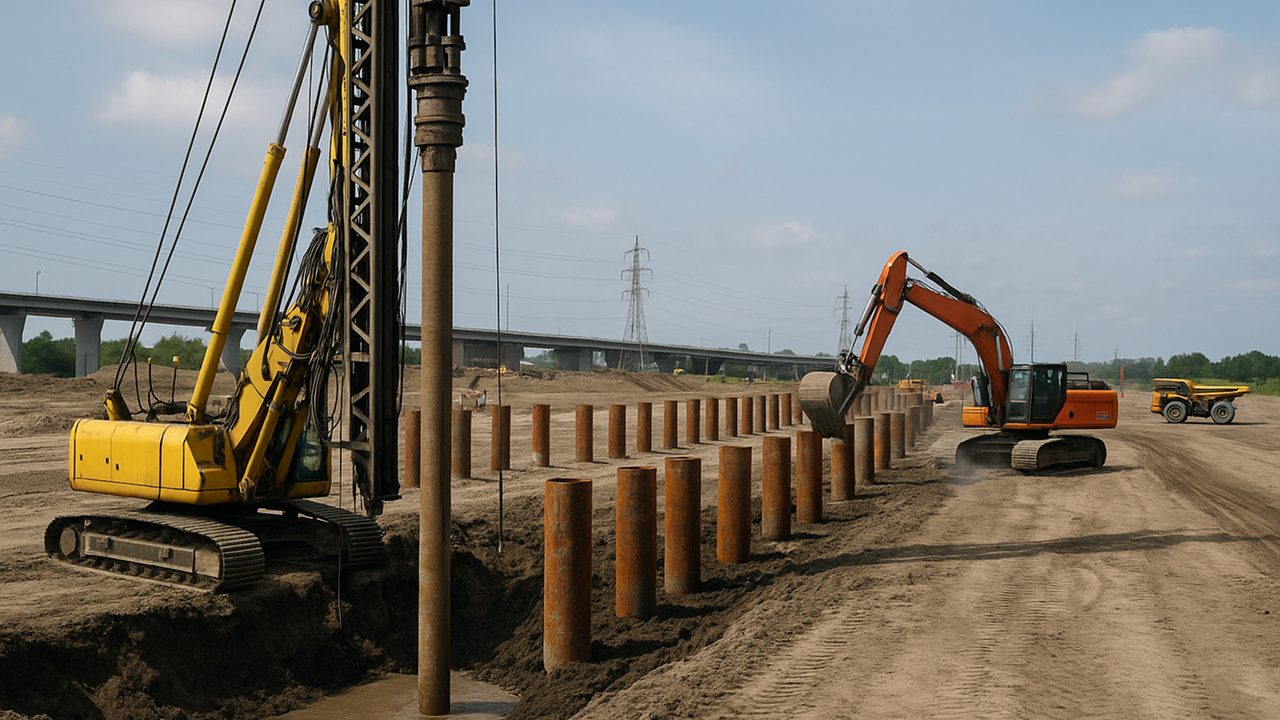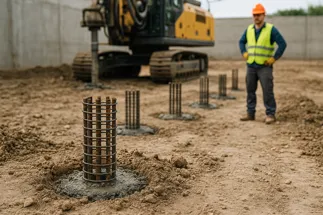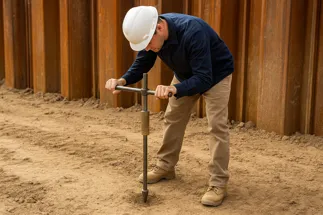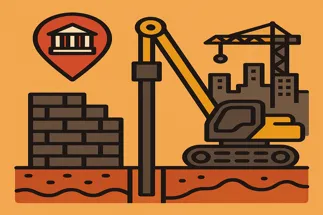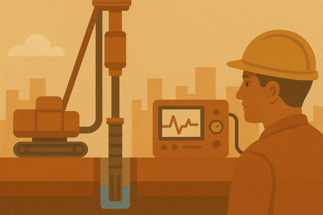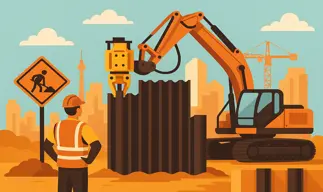The Human Factor in Diaphragm Wall Construction: Skill Gaps, Safety Culture, and Training Needs
When people talk about technology in construction, they often picture machines, automation, or fancy software dashboards. But those who’ve actually stood near a trench full of slurry during a diaphragm wall pour know a very different truth: people still make or break the job.No matter how advanced the diaphragm wall construction process method becomes, it’s still a human-driven process. You’ve got operators judging by sound and vibration, site engineers checking levels under pressure, and technicians making last-minute adjustments before the concrete goes in. Machines help—but it’s people who decide how well everything holds together.
What the diaphragm wall construction process Really Demands
A diaphragm wall construction process isn’t something that happens by chance. It’s a series of tightly controlled steps—each one depending on the other.You start by building guide walls, then excavation follows using a grab or hydrofraise while keeping the trench supported with bentonite or polymer slurry. Reinforcement cages are placed carefully, and then concrete is poured through tremie pipes, pushing the slurry out. That’s the simplified version—but on-site, nothing is ever that simple.The real challenge lies in timing and coordination. The diaphragm wall construction sequence has to run like clockwork. If the grab operator takes too long, slurry quality starts to degrade. If the concrete pour stalls, you risk cold joints. Even a small communication gap between the batching plant and the site team can cost hours or, worse, compromise the integrity of the wall.That’s why the diaphragm wall construction procedure is only as good as the people running it.
Skill Gaps That No Machine Can Hide
Even though modern sites are full of automated instruments and sensors, one thing keeps showing up again and again—skill gaps. And they’re not always obvious until something goes wrong.
1. Equipment Operation Isn’t Just Button Pressing
You’ll often find new operators trained only in running the machine, not in reading the soil. The best ones can tell if a grab is drifting just by the change in vibration or the sound of the chain. That kind of intuition doesn’t come from manuals—it comes from experience, usually passed down informally. When that knowledge chain breaks, quality suffers.
2. Reinforcement and Concrete Work Need Precision Hands
Setting a reinforcement cage straight into a narrow trench is a tricky business. If it swings or catches the wall, it can bend the bars or scrape the slurry layer. Then comes the concrete pour—another point where skill matters more than equipment. Tremie pipes need continuous flow; any gap means potential weak spots.
In theory, everyone knows the diaphragm wall construction technique. In practice, it’s those tiny, human-level decisions that make all the difference.
3. Engineering Gaps
Even young site engineers, sharp and well-trained, sometimes struggle with the real-world aspects—like predicting how weather changes affect slurry or how nearby traffic vibrations can cause trench instability. The best engineers blend textbook understanding with a site instinct that only comes through exposure.
Safety Culture: The Unwritten Rule book
Every construction site has a safety manual. But culture isn’t built on paperwork—it’s built on habits.A strong safety culture around diaphragm wall construction process isn’t just about helmets and vests; it’s about communication and trust. People need to feel free to stop work if they sense something off. Sometimes, a small observation—like the slurry level dipping faster than expected—can prevent an accident.Trench collapses, equipment malfunctions, chemical exposure during slurry handling—all are preventable if the team treats safety as a shared responsibility. Supervisors who talk about safety like it’s everyone’s business build stronger teams than those who just enforce rules.And here’s the thing: a team that works safely usually works better overall. Fewer injuries mean fewer disruptions, less rework, and more confidence on site.
Training: The Missing Layer in Many Projects
Ask anyone in the field and they’ll tell you—the biggest gap isn’t technology, it’s training. Too often, workers are thrown into diaphragm wall projects without the time or support to really understand the process.Training shouldn’t just be about compliance. It should be about competence. Real training means walking someone through the diaphragm wall construction procedure—not in theory, but live on-site, panel by panel. It means letting them see how slurry reacts when density changes, or how concrete flow rate affects stability.Practical exposure builds confidence, and confidence builds safer, more efficient teams.Companies that invest in skill development tend to have smoother projects. A good approach is pairing new workers with senior mentors. Over time, that mix of classroom knowledge and site experience builds depth—the kind of depth you can’t fake.
Technology Helps, But People Decide
In the last few years, a lot of advanced monitoring tools have entered diaphragm wall construction. Sensors track trench depth, slurry properties, and even panel alignment in real time. It’s great progress—but technology alone doesn’t guarantee success.At the end of the day, data still needs human interpretation. Machines can alert you that a reading is off, but someone has to know why and what to do next.That’s why companies like Grimtech are gaining attention—they’re not just developing smarter systems, but designing them to assist field engineers rather than replace them. Their philosophy seems to recognize that no sensor can replicate human judgment, especially in complex soil conditions.
The Real Foundation: People Who Care About Their Work
When a diaphragm wall construction process performs perfectly, most people credit the design or the method. But anyone who’s been on-site knows it’s the team that makes it happen—the operator who double-checks alignment at midnight, the engineer who adjusts a mix ratio after seeing a change in groundwater, the worker who spots an issue others missed.That’s the real human factor.It’s not about perfection; it’s about responsibility, awareness, and pride in the craft. As the diaphragm construction method continues to evolve, the industry’s challenge is not just adopting new machines—it’s making sure the people behind them grow just as fast.
Conclusion
In every diaphragm wall construction process, there’s a quiet partnership between man and machine. The machines dig, lift, and pour—but people think, adapt, and solve.Skill gaps can be closed with training, safety culture can be strengthened through leadership, and technology can be shaped to fit human hands. But none of it works if we forget that construction is, above all, a human business.The diaphragm construction method may be an engineering marvel, but its heart still beats with human rhythm.


